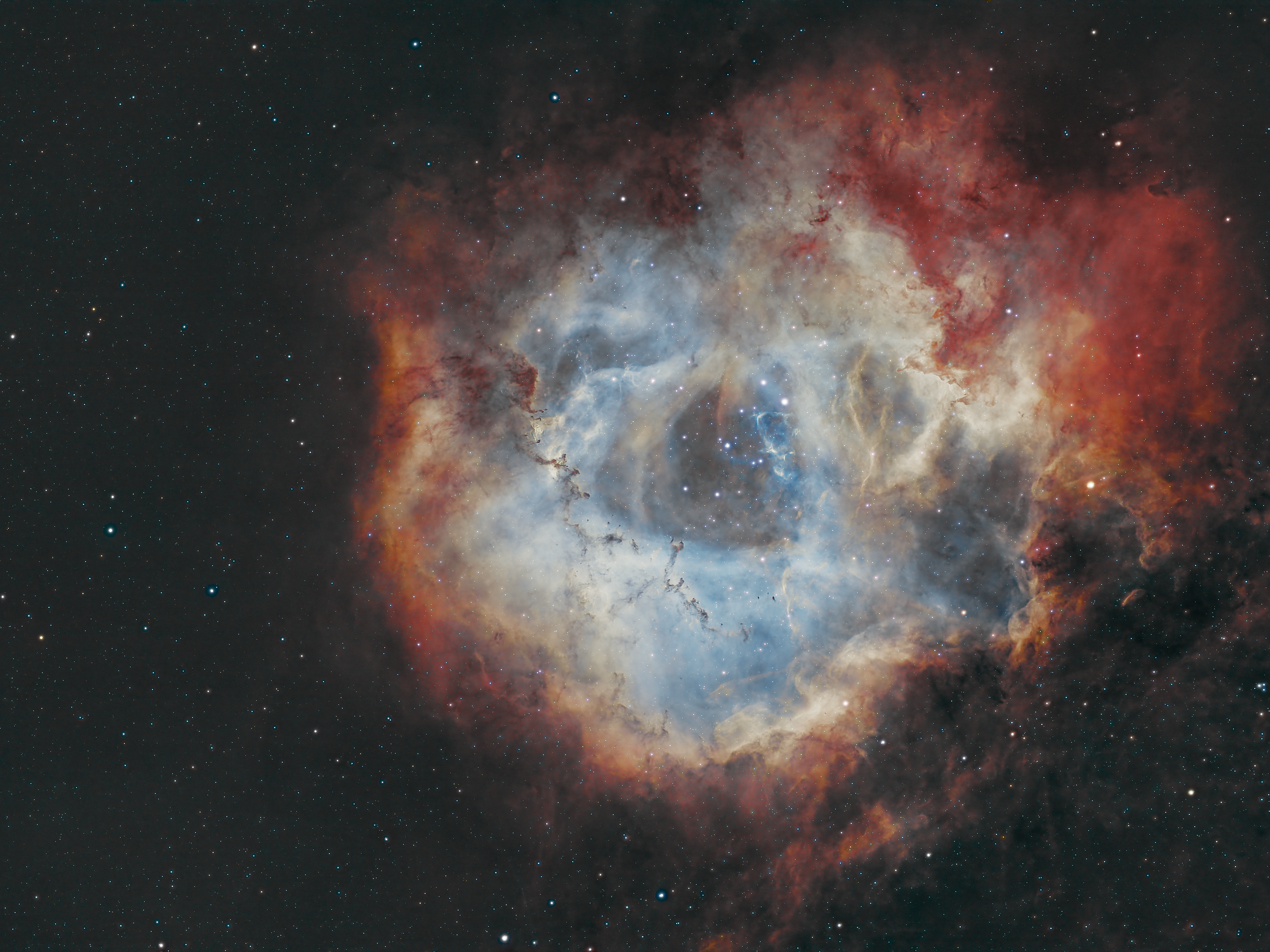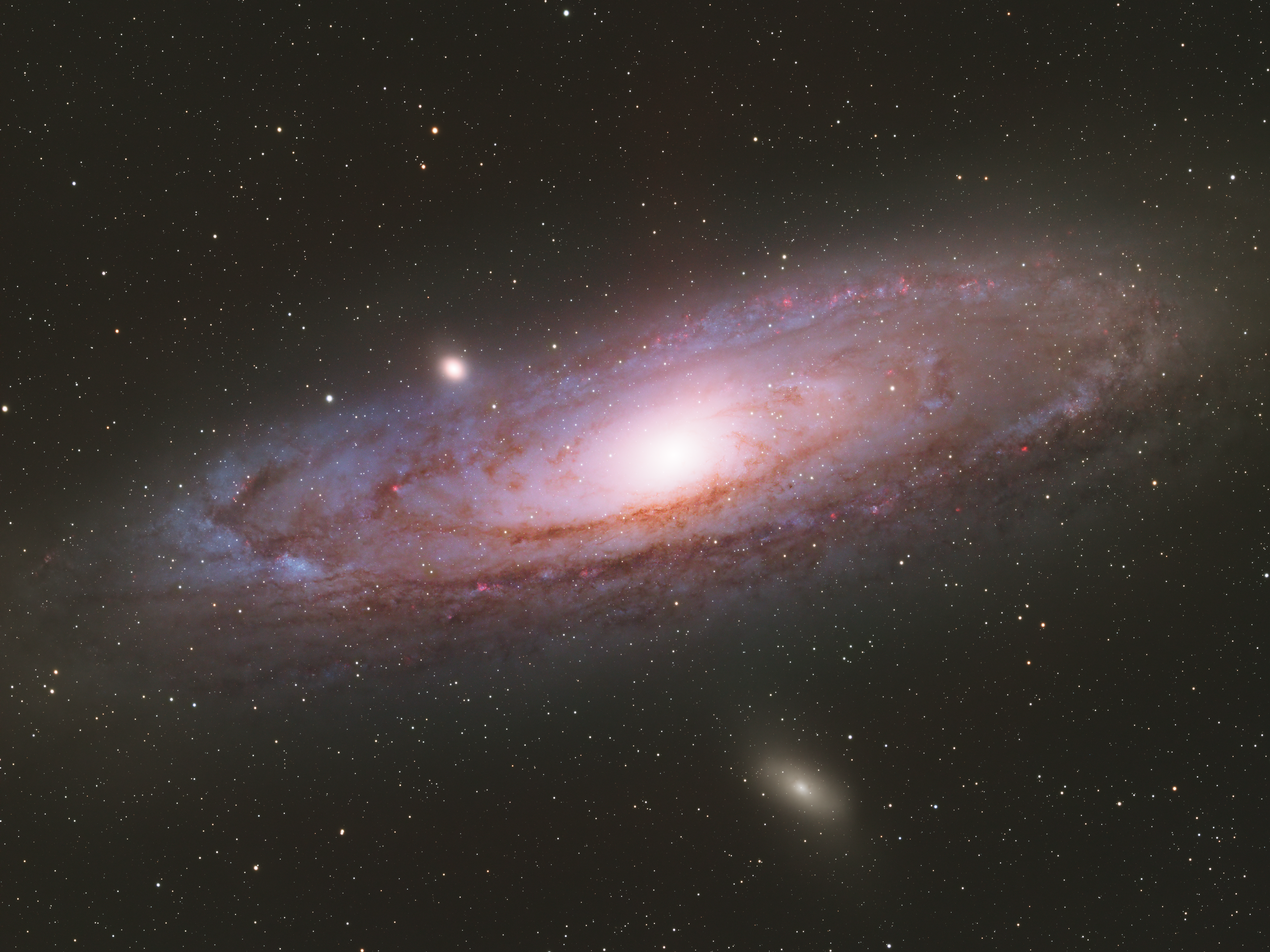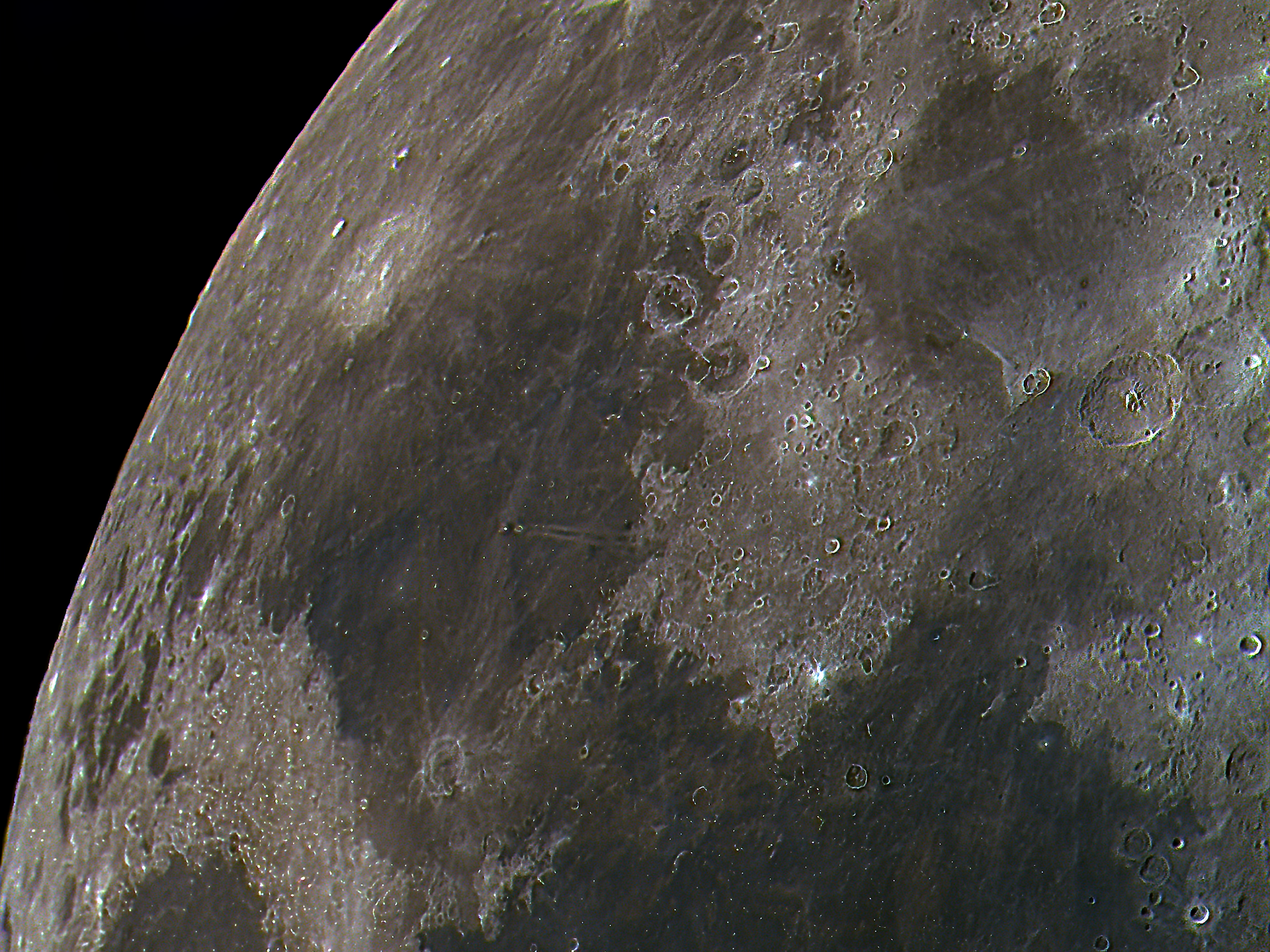
The Perseus Double Cluster, comprising NGC 869 and NGC 884, is a stunning pair of open star clusters about 7,500 light-years away in the constellation Perseus. These young clusters, around 12.8 million years old, feature bright blue stars and a few red supergiants, offering a vibrant celestial display. Surrounding the clusters are Hydrogen-alpha (Hα) clouds, which emit a soft, reddish glow, adding depth to the scene and highlighting the ionized hydrogen gas in this star-forming region of the Milky Way Galaxy.

The Pleiades, also known as the Seven Sisters or Messier 45 (M45), is one of the most recognizable open star clusters in the night sky. Located approximately 440 light-years away in the constellation Taurus, the cluster features hundreds of stars, with its brightest members—Alcyone, Maia, Electra, Taygeta, Merope, Celaeno, and Sterope—forming the iconic “Seven Sisters” visible to the naked eye. The Pleiades are enveloped by a reflection nebula, where blue dust clouds shimmer as they reflect the light from the hot, young stars. Revered in cultures and mythologies worldwide, the Pleiades have guided harvests, inspired stories, and remain a beloved target for astronomers and stargazers alike.




